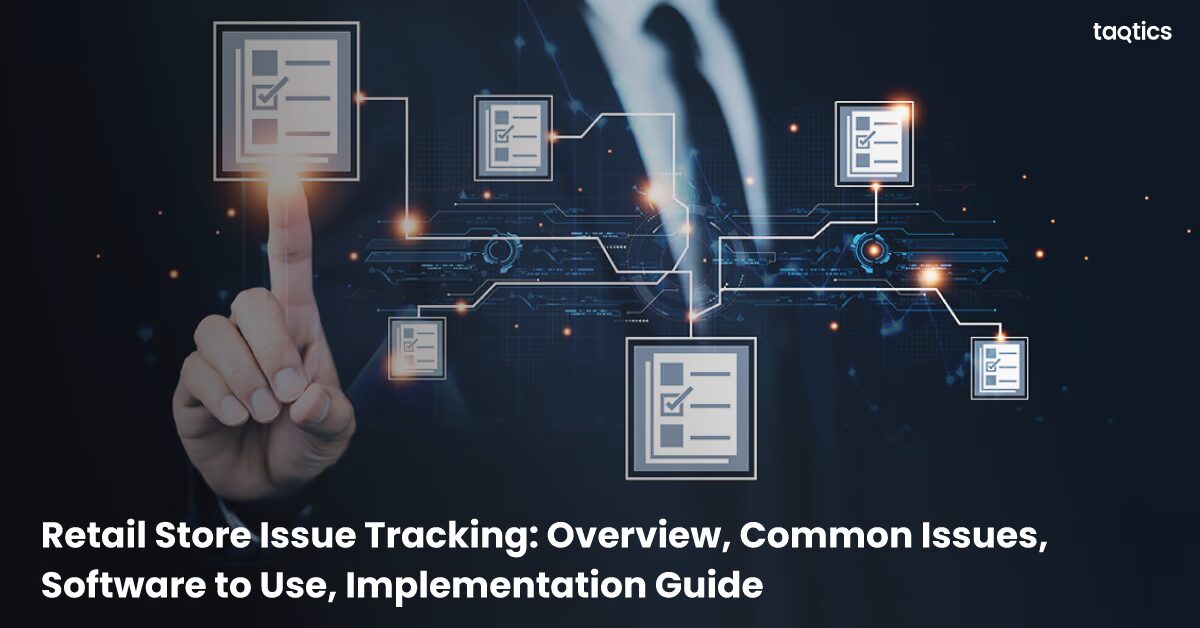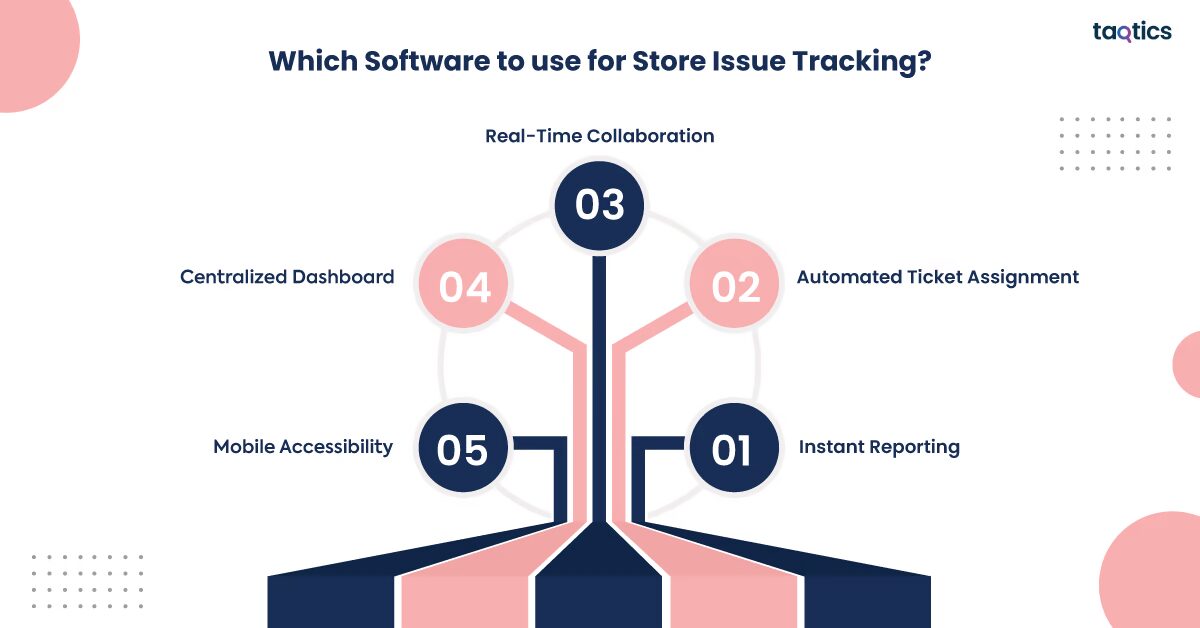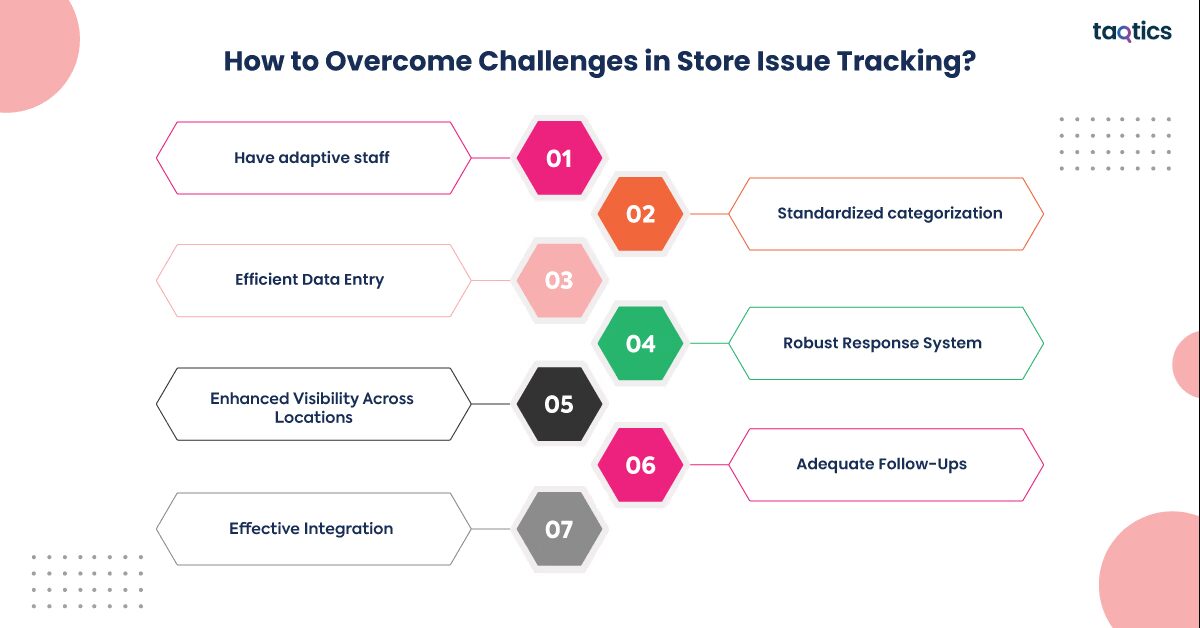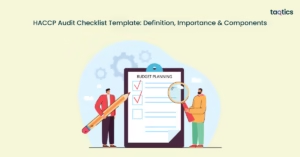Retail Store Issue Tracking: Overview, Common Issues, Software to Use, Implementation Guide

Store issue tracking is a structured process for identifying, recording, and resolving operational problems within a retail environment. Store issue tracking across areas like inventory, customer service, employee performance, and profitability allow retailers gain data-driven insights that support better decision-making, reduce repeat problems, and improve operational efficiency.
Effective tracking ensures these issues are addressed promptly to maintain smooth store operations and enhance customer satisfaction, from inventory mismatches and equipment failures to customer complaints and employee errors. According to a report by the International Data Corporation (IDC), organizations that implement issue tracking software see a 15% increase in project productivity and a 12% reduction in project costs.
What is Store Issue Tracking?
Store issue tracking refers to the process of monitoring, recording, and managing issues related to a store’s operations. A store issue tracking system helps identify and resolve problems such as inventory discrepancies, damaged goods, stockouts, equipment failures, or customer complaints efficiently. The goal is to ensure smooth store functioning and maintain high service quality.
For example, if a store employee notices that a particular item is frequently out of stock despite regular restocking, they can log this issue in the tracking system. The store manager or inventory team can then investigate if an item is being misplaced in storage or if there’s an error in the inventory database. The store can prevent recurring problems and improve operational efficiency by tracking such issues.
Store issue tracking often uses digital tools or software to centralize data, assign tasks, set deadlines, and monitor progress. This improves accountability, ensures timely resolution, and supports better decision-making based on recurring issue trends.
What are the Common Retail Store Issues to Track?
The common retail store issues to track include inventory issues, customer experience issues, employee performance issues, sales issues, and profitability issues.
Inventory Issues
Inventory problems such as overstocking, stockouts, shrinkage, or mislabeling can disrupt sales and customer trust. For instance, if a high-demand product is frequently out of stock, customers may switch to competitors. Tracking inventory issues helps maintain optimal stock levels, prevent losses, and streamline supply chain operations.
Customer Experience Issues
Poor service, long wait times, disorganized store layout, or negative staff interactions can damage the shopping experience. For example, if customers regularly complain about slow billing at checkout, it signals a need for faster POS systems or better-trained staff. Monitoring feedback, reviews, and retail behavior as part of in-store customer experience strategies helps identify areas for improvement in customer service.
Employee Performance Issues
Low productivity, frequent absenteeism, or lack of product knowledge can affect overall store efficiency. Suppose a staff member regularly makes billing errors—tracking this can help provide targeted training or reassign responsibilities. Measuring individual and team performance ensures retail store employee performance improvement, enhancing accountability and supporting better workforce management.
Sales Issues
Unexpected drops in sales, slow-moving products, or ineffective promotions are key concerns. For example, if a seasonal promotion fails to boost sales as expected, analyzing the issue can reveal whether it was due to poor timing, pricing strategy, or lack of marketing. Tracking sales performance is one of the sales strategies for retail stores that helps refine strategies and forecast demand more accurately.
Profitability Issues
High operational costs, waste, or declining margins contribute to the impact of overstock and understock on retail profitability. For instance, excessive discounts given by staff without proper tracking might reduce overall profitability. Monitoring expenses, pricing strategies, and sales-to-cost ratios helps identify leakage points and improve financial health.
Proactively tracking common issues allows store managers to identify patterns, address root causes, and implement effective solutions.
What are the Importance of an Effective Store Issue Tracking System?
The importance of an effective store issue tracking system includes improved operational efficiency, enhanced inventory management, better customer satisfaction, accountability and transparency, and data-driven decision-making.
- Improved Operational Efficiency: Tracking systems streamline workflows and reduce downtime. According to a McKinsey report, stores that use issue tracking tools see up to a 30% improvement in task resolution speed.
- Enhanced Inventory Management: Real-time tracking of stock discrepancies or damaged goods minimizes losses. Retailers using automated issue tracking reported a 25% reduction in inventory-related errors, according to a study conducted by the Retail Systems Research.
- Better Customer Satisfaction: Quick resolution of customer-facing issues (like complaints or long wait times) boosts loyalty. A Zendesk study shows that 70% of customers associate positive experiences with quick issue resolution.
- Accountability and Transparency: Clearly assigned responsibilities ensure follow-through and performance monitoring. Teams become more accountable, thereby reducing repeat issues.
- Data-Driven Decision Making: By identifying recurring problems, retailers can optimize staffing, layout, and policies, increasing profit margins over time.
In short, a robust issue tracking system helps create a proactive, responsive, and data-informed retail environment.
Which Software to use for Store Issue Tracking?
Taqtics is the software to use for store issue tracking. It offers a comprehensive platform designed to streamline operations and enhance team collaboration. Key features include:

- Instant Reporting: Store teams can quickly report issues using photos, videos, and comments, ensuring prompt attention.
- Automated Ticket Assignment: Issues are categorized and assigned to the relevant teams automatically, reducing delays.
- Real-Time Collaboration: Teams can communicate, share files, and update statuses in real-time, ensuring efficient resolution.
- Centralized Dashboard: Monitor all issues across multiple locations from a single dashboard, gaining actionable insights.
- Mobile Accessibility: Access the platform via web, Android, and iOS, enabling on-the-go issue reporting and tracking.
Taqtics empowers retail teams to identify, report, and resolve store-wide issues promptly, enhancing operational efficiency and customer satisfaction.
How to Implement a Store Issue Tracking System?
To implement a store issue tracking system, retail businesses can follow six steps, which include selecting the right software, setting up a store network, defining issue categories, training teams, monitoring and managing issues, and analyzing performance.
- Select the Right Software
Choose a platform like Taqtics, which offers features such as real-time issue reporting, automated ticket assignment, and multi-location support. - Set Up Your Store Network
Configure all retail or restaurant outlets within the system, ensuring each location is accurately represented. - Define Issue Categories
Establish clear categories for various issues (e.g., inventory, customer service, equipment) to streamline reporting and resolution. - Train Your Teams
Educate store teams on using the platform effectively, emphasizing the importance of timely and accurate issue reporting. - Monitor and Manage Issues
Utilize real-time dashboards to track issue statuses, assign tasks, and ensure timely resolutions. - Analyze Performance
Review analytics and reports to identify recurring issues, assess team performance, and make informed decisions for continuous improvement.
By following these steps, retailers can enhance operational efficiency, reduce downtime, and maintain a consistent customer experience across all locations.
How to Measure & Improve Store Issue Resolution Efficiency?
To measure and improve store issue resolution efficiency, businesses can adopt seven fool-proof methods, which include tracking key metrics, using real-time dashboards, implementing SLAs, automating workflows, training and upskilling staff, conducting root cause analytics, and reviewing and acting on feedback.
- Track Key Metrics: Monitor metrics like average resolution time, first response time, and issue reopen rate.
- Average Resolution Time: The average time taken from when an issue is reported to when it is fully resolved and closed.
- First Response Time: The time taken from issue submission to when the first meaningful response or acknowledgment is provided by the team.
- Issue Reopen Rate: The percentage of resolved issues that are reopened due to incomplete resolution or recurring problems, indicating potential quality concerns.
According to a Zendesk report, reducing resolution time by 20% can boost customer satisfaction by 15%.
- Use Real-Time Dashboards: Platforms like Taqtics offer live dashboards that help managers spot bottlenecks and prioritize urgent issues quickly.
- Implement SLAs (Service Level Agreements): Define resolution timelines for different issue types. Meeting SLAs improves team accountability and speeds up problem-solving.
- Automate Workflows: Automating ticket assignment and status updates can cut response times by up to 30%, according to a Freshdesk report.
- Train and Upskill Staff: Regular training improves issue handling. According to a blog published by Growett, employees who receive customer service training show a 25% increase in productivity and a 29% increase in customer satisfaction.
- Conduct Root Cause Analysis
Analyze frequent or recurring issues to resolve underlying problems, preventing future disruptions. - Review & Act on Feedback
Gather staff and customer feedback to identify process gaps and improve the system continuously.
Measuring and improving retail task efficiency is vital for smooth retail operations, reduced downtime, and enhanced customer satisfaction.
How to Overcome Challenges in Store Issue Tracking?
To overcome challenges in store issue tracking, businesses can implement strategies, like having adaptive staff, standardized categorization, efficient data entry, robust responses, enhanced visibility, adequate follow-ups, and effective integration.

- Have adaptive staff: Provide hands-on training and explain the benefits of the tracking system. Highlighting how it simplifies their daily work and reduces stress can help staff adapt to the changes.
- Standardized categorization: Create standardized issue categories, reporting formats, and workflows to ensure consistency across all stores and teams.
- Efficient Data Entry: Use drop-down menus, checkboxes, and guided forms to minimize manual errors and ensure clean, reliable data.
- Robust Response System: Set clear Service Level Agreements (SLAs) and use automated notifications to keep staff accountable and responsive.
- Enhanced Visibility Across Locations: Use cloud-based tracking tools with centralized dashboards to give management real-time visibility into issues across all store locations.
- Adequate Follow-Ups: Assign issues to specific team members and implement regular progress checks to ensure nothing slips through the cracks.
- Effective Integration: Choose tools that integrate with your POS, CRM, or communication platforms to streamline data flow and avoid duplication.
Implementing a store issue tracking system can present several challenges, from staff resistance to data mismanagement. By addressing and identifying these common challenges in retail operations and solutions, retailers can unlock the full potential of issue tracking systems and maintain smoother store operations.



